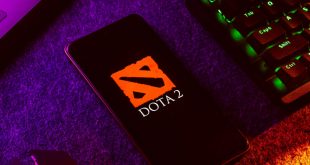The relationship between latency and stream delay is pivotal to how the esports betting industry operates, writes PandaScore CEO Flavien Guillocheau.
The functionality between these two elements has become increasingly pertinent as the sector continues to grow, expand live betting opportunities and become a sportsbook staple.
To understand how it all fits together, it’s important to first establish the difference between latency and delay.
Due to the basic laws of physics, latency is virtually impossible to completely eradicate. The latency of a game is based on how fast a player can send a command to the game and have the game (or its server) display what happened.
The industry has made fantastic strides forward in bringing latency down to an absolute minimum but there will always be limitations to this.
Latency itself is not a problem, the current industry level is under 10 seconds which is not perfect but is not problematic as most people don’t have the means or knowledge to be able to exploit that level of latency.
Stream delay is the biggest risk factor for punters and has a significant impact on customer engagement in esports betting. All esports tournaments are cast to the public with a time delay, anywhere from 5-10 minutes.
This delay is purposely implemented by the broadcaster to prevent players from gaining an advantage by viewing the cast and knowing what the other team is up to in real time. It also gives operators a headstart in creating the most advantageous odds.
There are operators in the sector who receive the stream with little to no delay, and some that receive it with a delay. Traditionally this has proved to be a reliable revenue stream for tournament organisers, who profit from selling priority access. There is a similar setup with the actual in-game statistics and data.
Some operators are able to offer the direct data stream to their customers, and in select cases, there are also ways of getting access to the data from the game without the actual video stream. While uncommon, instances like these give the savvy esports bettor an equal footing to the operator.
The in-stream delay is an increasingly accepted practice within the industry, especially since most tournaments shifted to online as the pandemic unfolded. However, the main problem arises when viewers are placing in-play bets but are being forced to use ‘out of time’ odds that are inaccurate.
The odds makers therefore have a 5-minute advantage on their customers, unfortunately resulting in a major disconnect between the viewing and betting experiences. Esports viewers thrive on interacting with the live game action, hence why significant stream delays are such a big risk to customer experience.
Levels of stream delay are also heavily influenced by the tier of tournament or match being viewed. Lower tier esports leagues and more niche gaming titles typically will not have an official data supplier, so there’s no mass data feed for everyone to access.
For matches like these, the punters, operators, players and spectators are all receiving their information from one place; the online stream – so there isn’t a significant disparity when comparing data speed to stream speed. In situations like this, nobody has an advantage, so issues of delay and latency are far less problematic.
The biggest risks to esports betting integrity are usually found in the higher tiers of esports. Top level games that are being broadcast all over the globe that have official data feeds are where the issues of latency and delay have the biggest impact.
The delay between video feed and odds feed is most disparate with MOBA (Multiplayer Online Battle Arena) games such as League of Legends or DOTA 2. MOBA games usually consist of continuous gameplay for 40 – 50 minutes with no pauses or rounds. Huge shifts in momentum can happen in the 5+ minute difference between what the operator sees and what the punter sees.
Titles such as Counter-Strike and Valorant are ‘rounds – based’ games, meaning their gameplay is a lot more fragmented. So, with a 5-minute delay, the viewer will only be 1 or 2 rounds behind at most which is typically not enough of a window to impact the final result of an entire match.
The operator can be put at an increased risk if a customer or group of customers becomes aware of the disparity between the stream and the odds data whilst also having access to the real time data or seeing the event happen in real time.
This is unlikely as most official data is closed to punters, but there is still a risk and it has happened previously. Regulators can assist with this through the implementation of minimum data standards and best practices for tournaments at all levels.
Additionally it can be unfair for punters who are watching and betting on the event as the odds do not reflect what is actually happening in the stream. The current knowledge gap between operator and punter is so significant that it not only creates a less fair environment for the punter, but it detracts from the end user experience.
There will always be some element of delay, just like we have in sports betting, but it’s about creating a more equitable betting experience that tangibly reflects what’s happening on stream.
For operators offering esports, being able to create an exciting experience for the punter is business critical. Aligning the betting experience more closely with the stream is essential to making esports a highly engaging product. Statistics show that matches with the biggest delays also have the lowest betting volume, further demonstrating the need for improvement in this area.
The key to enhancing the customer experience while maintaining the highest levels of sports integrity is in better aligning data feeds with the broadcast streams punters watch.
Creating a betting environment that parallels the sports betting experience is the key to unlocking future innovation and growth in the industry.









